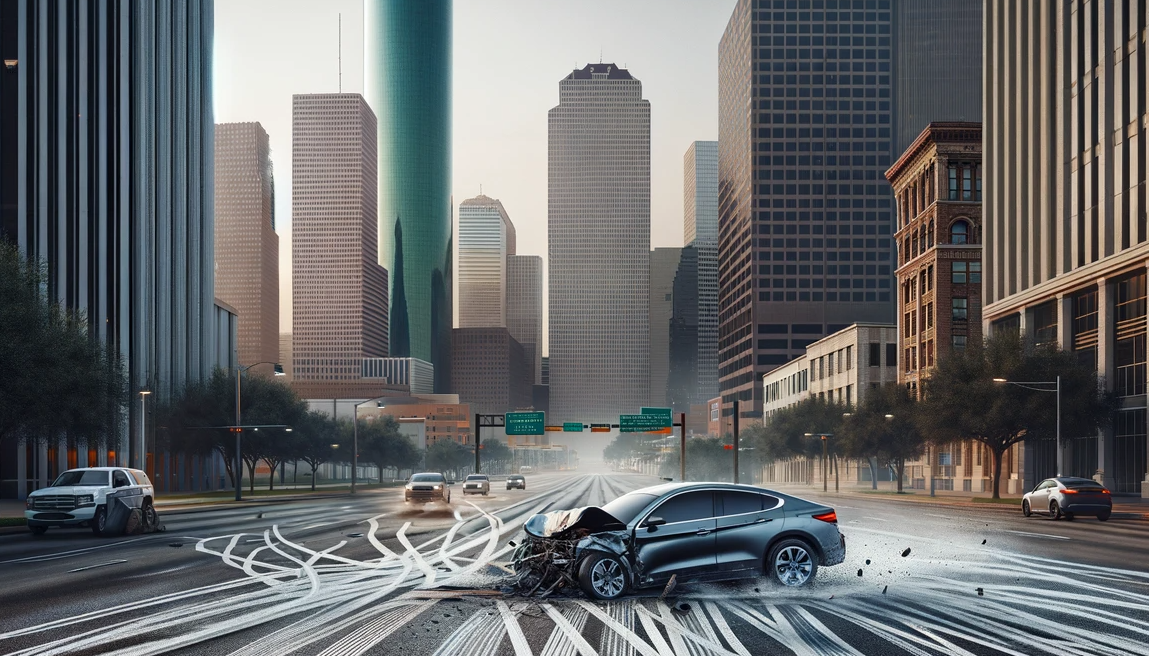Reckless Driving Accidents: Determining Fault
January 14, 2024

Reckless driving accidents can have devastating consequences, causing serious injuries, property damage, and even loss of life. When such accidents occur, it is crucial to determine fault in order to pursue legal action and seek compensation for the damages sustained. In this article, I will delve into the process of determining fault in a reckless driving accident, exploring the distinction between negligence and recklessness, and providing insights into the complexities of liability and insurance claims.
- Key Takeaways
- Negligence vs. Recklessness: Understanding the Difference
- Proving Negligence in a Car Accident Claim
- Identifying Recklessness in a Car Accident Claim
- Determining Fault Through Police Reports and Insurance Claims
- Police Reports: Unveiling the Sequence of Events
- Insurance Claims: A Comprehensive Investigation
- A Complete Picture: The Intersection of Police Reports and Insurance Claims
- Seeking Legal Action in a Reckless Driving Accident
Key Takeaways
- Reckless driving accidents can result in severe injuries and extensive property damage.
- Determining fault is essential for pursuing legal action and seeking compensation.
- Understanding the difference between negligence and recklessness is crucial in assessing fault in car accidents.
- Proving negligence requires establishing a breach of duty and a causal link to the accident and resulting harm.
- Identifying recklessness involves demonstrating a willful disregard for the safety of others.
Negligence vs. Recklessness: Understanding the Difference

In car accident claims, negligence and recklessness are two distinct concepts that play a significant role in determining fault and liability. It is important to understand the difference between negligence and recklessness to navigate the complexities of car accident cases effectively.
Firstly, negligence refers to the failure to exercise a reasonable level of care and caution while operating a vehicle. Negligent driving behaviors include actions that unnecessarily endanger others on the road, such as speeding, distracted driving, drunk driving, and failing to signal.
On the other hand, recklessness involves a willful disregard for the safety of others. Reckless driving behaviors go beyond negligence and include actions that display a conscious choice to endanger others. These behaviors may include excessive speeding, tailgating, and aggressive driving.
While both negligence and recklessness can result in car accidents, recklessness is considered to be more severe due to the intentional disregard for safety. In cases involving recklessness, proving fault becomes crucial in seeking compensation and holding the at-fault driver accountable.
Understanding the distinction between negligence and recklessness is essential for determining fault in a reckless driving accident. It helps establish the level of care and caution that should have been exercised by the at-fault driver and can make a significant difference in the outcome of a legal claim.
Next, we will dive deeper into the process of proving negligence in a car accident claim.
Proving Negligence in a Car Accident Claim

When filing a car accident claim, proving negligence is essential in establishing fault. To successfully demonstrate negligence, the plaintiff must establish four key elements:
- Duty of Care: The plaintiff must show that the defendant (the other driver) owed them a duty of care. This duty of care refers to the legal obligation to act responsibly and reasonably while operating a motor vehicle.
- Breach of Duty: It is necessary to prove that the defendant breached their duty of care by acting below the standard expected of a reasonable driver. This typically involves engaging in negligent driving behaviors such as speeding, distracted driving, or failing to yield.
- Causal Relationship: The plaintiff must establish a direct causal relationship between the defendant’s breach of duty and the occurrence of the accident. This means demonstrating that the defendant’s negligent actions directly caused the collision.
- Damages: Lastly, the plaintiff must prove that they have suffered damages as a direct result of the accident. Damages can include physical injuries, property damage, medical expenses, lost wages, and pain and suffering.
By satisfying these four elements, the plaintiff can build a compelling case for establishing negligence and proving fault in a car accident claim. This evidence can provide the basis for seeking compensation and holding the at-fault driver accountable for their actions.
Remember, each car accident case is unique, and the specific details will determine the strength of the negligence claim. Consulting with a qualified personal injury attorney can provide valuable guidance and support throughout the process.
Identifying Recklessness in a Car Accident Claim
In a car accident claim, it is crucial to identify and establish recklessness on the part of the defendant. Recklessness signifies a willful disregard for the safety of others and can significantly impact the outcome of the case. By demonstrating that the at-fault driver engaged in reckless driving behaviors, such as excessive speeding, tailgating, and aggressive driving, it becomes evident that they consciously chose to endanger others on the road.
Proving recklessness in a car accident claim can have various implications. Firstly, it may result in punitive damages, which serve as a form of punishment and deterrent. These damages go beyond compensating the victim for their injuries and aim to hold the at-fault driver accountable for their willful misconduct. Additionally, establishing recklessness may lead to more severe legal penalties for the negligent party, such as license suspension or even criminal charges.
Identifying fault based on recklessness requires a thorough investigation of the accident. Eyewitness testimonies, video footage, and expert analysis can help paint a clear picture of the at-fault driver’s willful disregard for safety. This evidence becomes crucial in building a strong case and ensuring that the victim receives the compensation they deserve.
However, it is important to note that proving recklessness can be a complex process. Insurance companies may try to downplay the severity of the defendant’s actions or shift blame onto the victim. In such situations, it is imperative to consult with a skilled personal injury attorney who specializes in car accident claims. They have the expertise and resources needed to navigate the legal intricacies and fight for the victim’s rights.
Determining Fault Through Police Reports and Insurance Claims
When it comes to determining fault in a car accident, the information gathered from police reports and insurance claims is invaluable. Both play a crucial role in the accident investigation process and can provide key insights into establishing liability. Let’s take a closer look at how these sources contribute to determining fault in a reckless driving accident.
Police Reports: Unveiling the Sequence of Events
After an accident, police officers arrive at the scene to assess the situation and gather important evidence. They meticulously document details such as the location, time, weather conditions, and any contributing factors that may have led to the accident. The officers also interview witnesses and collect their statements, adding another layer of information to the investigation.
The police report, generated by the investigating officer, includes an assessment of fault based on their professional judgment. This assessment takes into account various factors, including traffic laws, witness statements, and physical evidence. The police report can be a critical document for determining fault and can serve as valuable evidence in legal proceedings.
Insurance Claims: A Comprehensive Investigation
Insurance companies also conduct their investigations to determine fault in a car accident. They review the details provided by both parties involved in the accident, assess property damage, injuries sustained, and analyze witness statements. Insurance adjusters thoroughly evaluate the evidence and supporting documentation to determine liability.
Insurance claims investigations typically involve a careful examination of the circumstances surrounding the accident. The goal is to ascertain which party acted negligently or recklessly, resulting in the collision. By considering the information from police reports, witness statements, and any additional evidence, insurance companies can make a fair and accurate determination of fault.
It’s important to note that the police report and insurance claim investigation are separate processes. Each provides a distinct perspective on the accident and fault, lending credence to the final determination of liability.
A Complete Picture: The Intersection of Police Reports and Insurance Claims
By taking into consideration the information gathered from both police reports and insurance claims, a clearer and more comprehensive understanding of fault can be established for a reckless driving accident. These complementary sources of information provide different viewpoints and valuable insights into the sequence of events, contributing factors, and the actions of the parties involved.
In the unfortunate event of a reckless driving accident, the evidence and analysis provided by police reports and insurance claims can be instrumental in pursuing legal action and seeking fair compensation. Understanding how these processes work together is essential for building a strong case and ensuring that justice is served.
| Police Reports | Insurance Claims |
|---|---|
| Provide detailed documentation of the accident scene | Evaluate property damage and injuries sustained |
| Include witness statements and officer assessments of fault | Analyze witness statements and additional evidence |
| Serve as valuable evidence in legal proceedings | Contribute to a fair determination of liability |
Seeking Legal Action in a Reckless Driving Accident
If you have been injured in a reckless driving accident, it is crucial to pursue legal action to protect your rights and seek fair compensation. Reckless driving can result in devastating consequences, causing physical injuries, emotional trauma, and financial losses. By consulting with a personal injury attorney, you can navigate the complexities of liability, insurance claims, and the legal process.
A skilled personal injury attorney will assess the details of your case, gather evidence, and build a strong claim to establish fault and pursue the compensation you deserve. They have the expertise to negotiate with insurance companies, ensuring you receive a fair settlement that adequately covers your medical expenses, lost wages, pain and suffering, and other damages resulting from the accident.
Through legal action, you can hold the at-fault driver accountable for their recklessness and negligence. It also serves as a deterrent for future incidents, helping to make our roads safer for everyone. Taking swift legal action is essential as there may be time restrictions for filing a claim, known as the statute of limitations, which varies by state.
Do not bear the burden of the reckless driving accident alone. Seek the guidance and support of a personal injury attorney who will fight for your rights, ensuring that you receive the justice and compensation you deserve.